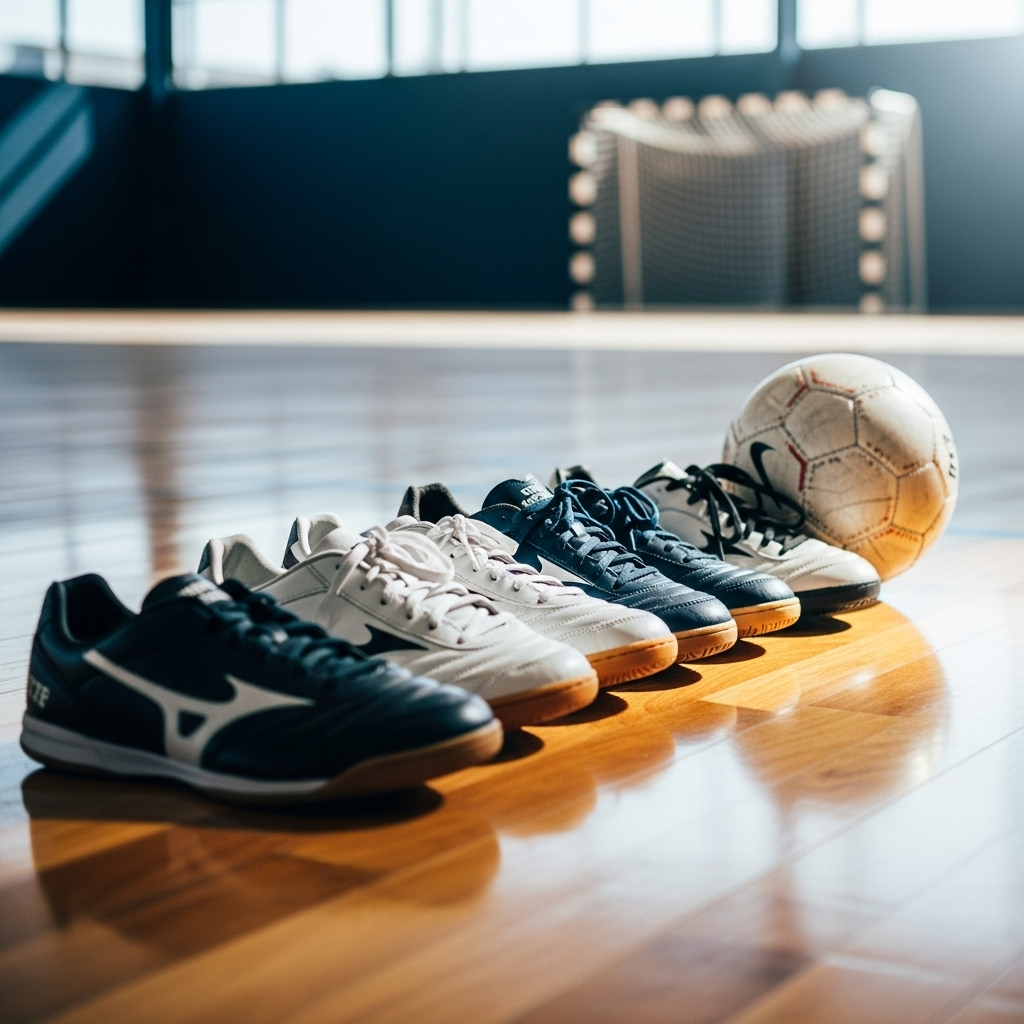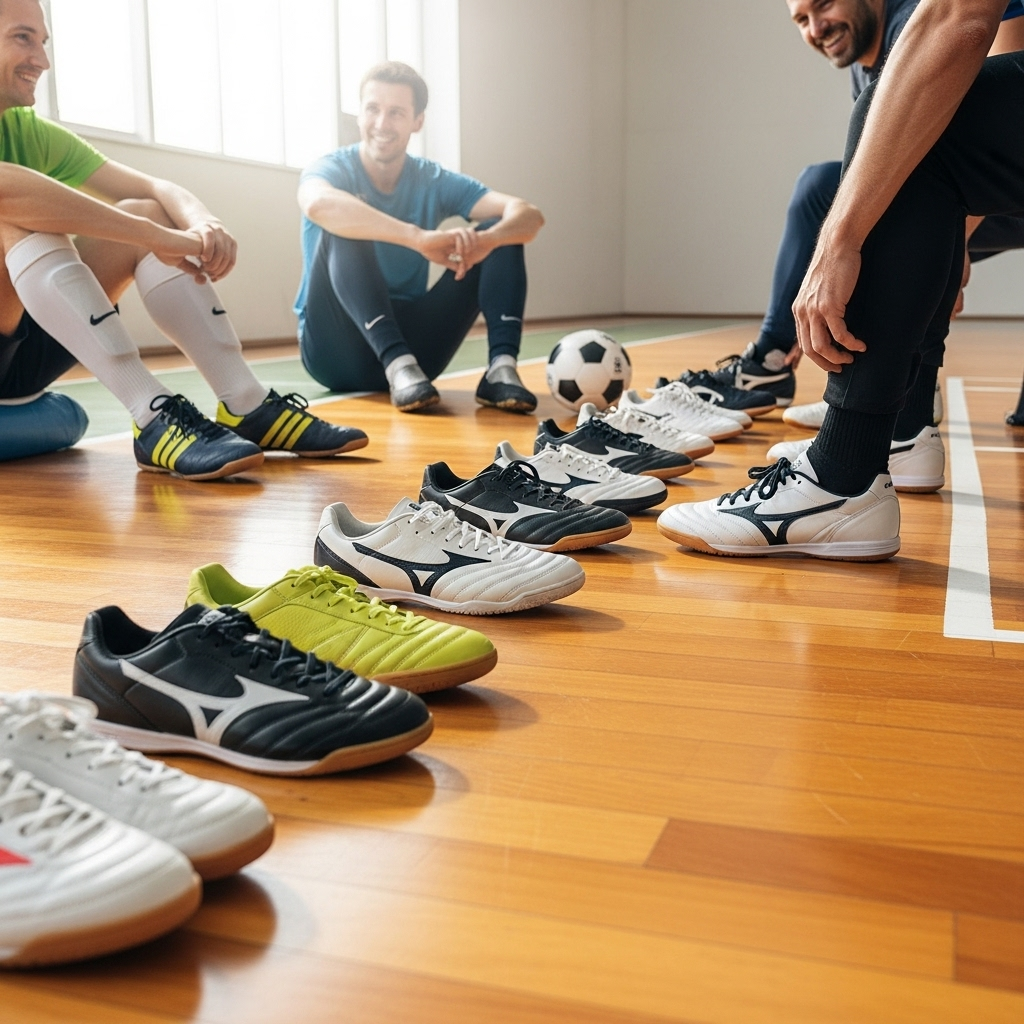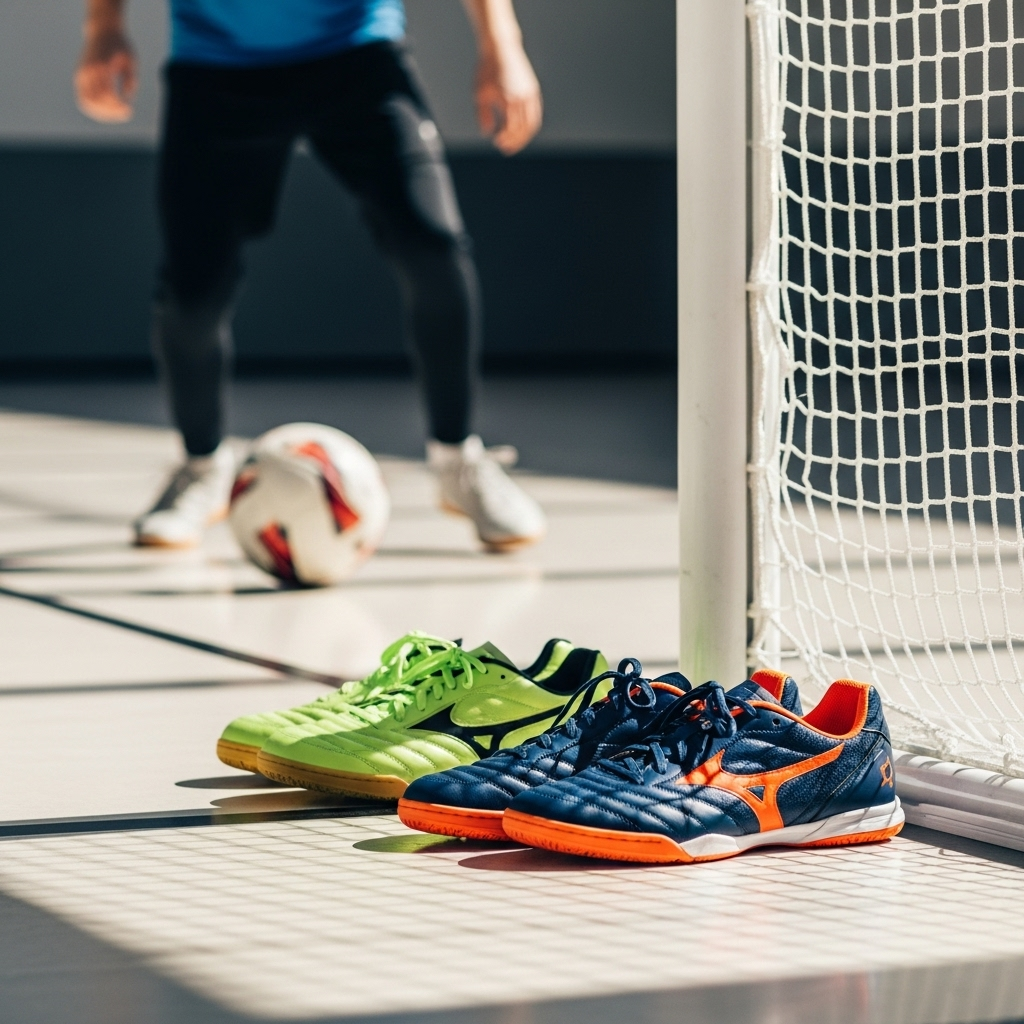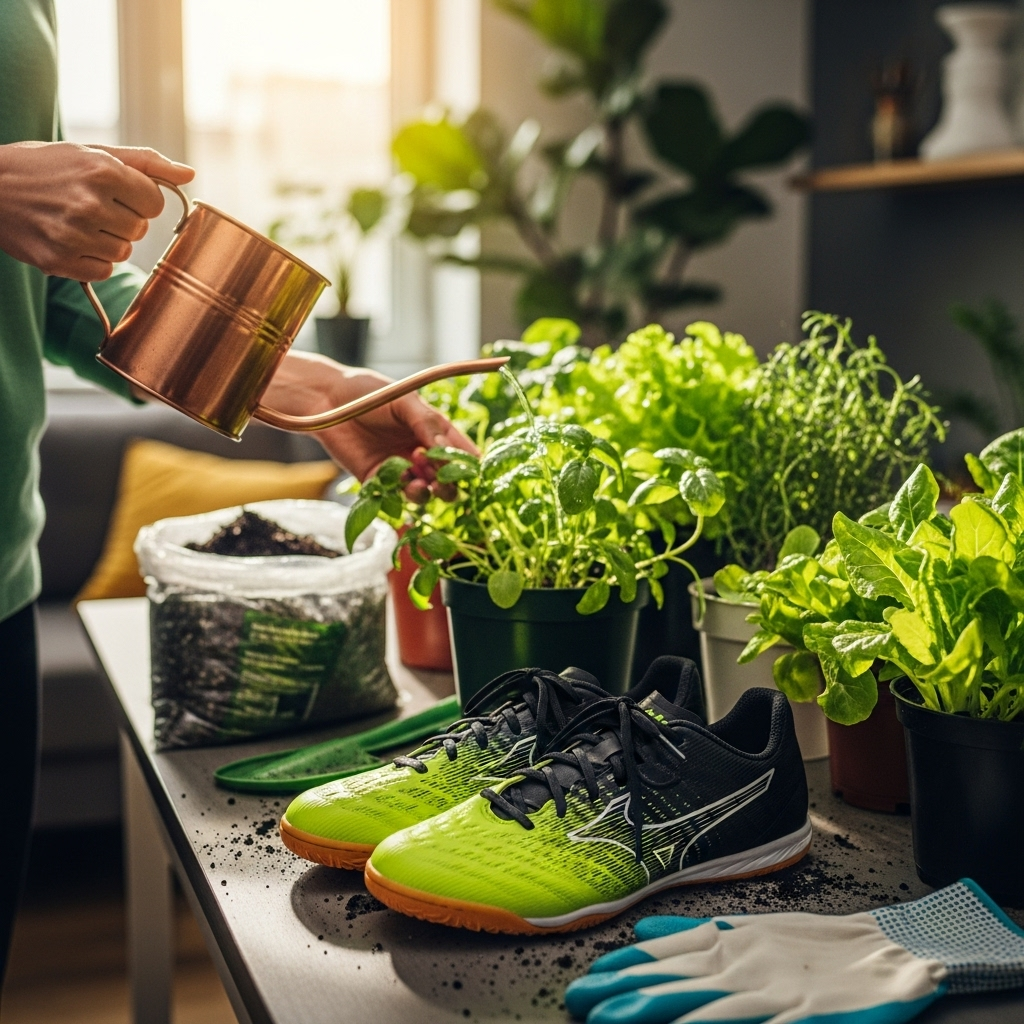Quick Summary: For indoor soccer, choose shoes with non-marking rubber soles that offer excellent grip and flexibility. Look for a snug but comfortable fit without excessive padding. These specialized “turf shoes” or “indoor soccer shoes” are designed to maximize performance and minimize the risk of slips on court surfaces.
Stepping onto an indoor soccer court for the first time can be exciting, but the question of what footwear to wear can feel a little bewildering. You might wonder if your regular sneakers will do the trick, or if there’s a special kind of shoe needed. It’s a common puzzle, especially when you’re just starting out! The right pair of indoor soccer shoes can make all the difference in your game, helping you move confidently, grip the floor, and play your best without worrying about slipping. Let’s break down exactly what makes the perfect indoor soccer shoe so you can ace your next indoor match with the right gear.
Why the Right Shoes Matter for Indoor Soccer
Indoor soccer is played on a variety of surfaces, most commonly hardwood, gym floors, or specialized artificial turf designed for indoor play. Unlike outdoor grass or firm ground, these indoor surfaces can be much smoother and less forgiving when it comes to traction. This is where your footwear becomes crucial. Wearing the wrong shoes—like running shoes with deep treads meant for athletic tracks or outdoor trails—can lead to serious problems. These deep treads can get caught on the court’s surface, causing you to lose your balance or even twist an ankle. They also don’t provide the right kind of grip needed for quick, sharp movements on a smooth floor.
On the flip side, shoes designed specifically for indoor soccer, often called indoor soccer shoes or futsal shoes, offer a tailored solution. They are engineered with subtle but important features that enhance your agility, control, and safety on these particular surfaces. Think of them as your secret weapon for staying on your feet, making those quick cuts, and delivering those precise passes. They are the foundation of a great indoor soccer experience, allowing you to focus on the game itself rather than your footing.
Understanding Indoor Soccer Shoe Types

When you start looking for indoor soccer shoes, you’ll quickly notice a few common categories, and understanding the nuances between them will help you make the best choice. Don’t worry; it’s simpler than it sounds!
Indoor Soccer Shoes (Futsal Shoes)
These are your go-to for most indoor soccer environments. They are specifically designed to provide optimal grip and ball control on hard, flat surfaces like gym floors and wood courts. Key characteristics include:
- Flat, Non-Marking Rubber Soles: This is the hallmark of indoor soccer shoes. The flat sole provides maximum contact with the court surface for superior grip. The rubber is formulated to be “non-marking,” meaning it won’t leave scuff marks on polished gym floors – a vital feature for many facilities.
- Low Profile: They typically have a slim, low-profile design that keeps your foot closer to the ground. This enhances your feel for the ball and allows for quicker, more responsive movements, essential for the fast-paced nature of indoor soccer.
- Flexible Upper: The upper part of the shoe is usually made from lightweight materials like synthetic leather or mesh. This offers a snug, sock-like fit that allows for natural foot movement and breathability.
- Minimal Cushioning: While they offer protection, they don’t have the bulky cushioning found in running shoes. This is to ensure direct court feel and prevent excessive slippage.
Turf Shoes
Turf shoes are another option, often used for indoor soccer played on artificial turf fields. These are distinct from indoor court shoes. They have smaller, rubber nubs or “cleats” all over the sole, rather than a flat surface.
- Purpose: They are designed to provide grip on artificial turf surfaces that might otherwise be too slippery.
- Sole Pattern: The sole is covered in many small, short rubber studs. These studs dig slightly into the artificial turf to provide traction.
- When to Use: If your indoor play is exclusively on an artificial turf surface that feels a bit too slick with flat-soled shoes, turf shoes can be a good choice. However, for hard court surfaces, they are generally not recommended as the nubs might not provide the consistent grip needed and could potentially damage the floor.
Court Shoes vs. Running Shoes
It’s important to distinguish indoor soccer shoes from other athletic footwear:
- Running Shoes: These are designed for forward motion and sustained impact on surfaces like pavement or tracks. Their aggressive tread patterns and thick midsoles are not suited for the lateral movements and grip requirements of indoor soccer. They can easily lead to slips and ankle instability.
- Cross-Trainers: While more versatile than running shoes, they still typically lack the specific sole pattern and court feel needed for optimal indoor soccer performance.
Essential Features of the Best Indoor Soccer Shoes
Now that you know the types, let’s dive into the must-have features that make an indoor soccer shoe great. These are the elements you should look for when shopping:
1. Non-Marking Rubber Sole
This is non-negotiable. Look for the words “non-marking” or “gum rubber sole” on the shoe’s description or packaging. The material is specifically formulated to provide excellent traction on polished indoor courts without leaving behind unsightly black streaks. A good non-marking rubber sole offers a balance of grip, durability, and flexibility.
2. Excellent Traction and Grip
The sole design is paramount. Indoor soccer demands quick changes in direction, sudden stops, and explosive movements. The sole should have a pattern that allows your foot to grip the court effectively, preventing slips even during sharp turns or slides. Many indoor soccer shoes feature a combination of circular pivot points and wavy or straight grooves to aid in multidirectional grip.
3. Lightweight Construction
You want to feel agile and quick on your feet. Lightweight shoes reduce fatigue and allow for faster movements. Materials like mesh, lightweight synthetic leathers, and engineered fabrics are commonly used in the upper to keep the weight down while providing support.
4. Superior Ball Control
The surface of the shoe, particularly around the forefoot, plays a role in how you interact with the ball. Shoes designed for indoor soccer often have a textured forefoot or a specific material that enhances your close-control dribbling, passing, and shooting. A flatter, more direct contact with the ball is facilitated by the low-profile design.
5. Snug, Comfortable Fit
Your shoes should feel almost like an extension of your feet. A snug fit prevents your foot from sliding around inside the shoe, which can cause blisters and reduce control. However, “snug” doesn’t mean tight! There should be enough room to wiggle your toes slightly. Avoid shoes that are overly padded or bulky, as this can diminish the court feel and add unnecessary weight.
6. Durability
While lightweight is good, you also want your shoes to last. Look for quality construction, reinforced stitching in high-wear areas, and durable outsole materials. Many reputable brands use robust synthetic materials that can withstand the demands of regular play.
7. Ankle Support (Consideration)
Most indoor soccer shoes offer a low-cut design for maximum ankle mobility. This is generally preferred for the sport. However, if you have a history of ankle injuries or prefer more support, you might look for models with a slightly higher cut or internal ankle padding. It’s a personal preference, but remember that extreme ankle support can sometimes restrict movement, which is critical in indoor soccer.
How to Choose the Right Size and Fit

Getting the right fit is just as crucial as selecting the right type of shoe. An ill-fitting shoe can hinder your performance and lead to discomfort or injury. Here’s a step-by-step guide:
Step 1: Shop with Informed Expectations
Understand that soccer shoe sizing can sometimes differ from your everyday shoe size. It’s common for soccer players to wear a shoe that is a half to a full size smaller than their casual shoes to achieve that performance fit. However, this is a personal preference. The most important thing is that your foot is secure without being painfully constricted.
Step 2: Try Them On Later in the Day
Your feet naturally swell throughout the day, especially after being on them for a while. Trying on shoes in the afternoon or evening will give you a more accurate sense of how they will fit during a game when your feet are at their largest.
Step 3: Wear Your Soccer Socks
Always try on soccer shoes with the type of socks you plan to wear for playing. Soccer socks are typically thicker than everyday socks, and this extra material can significantly affect the fit. If you use shin guards, consider bringing those too, though for indoor soccer, shin guards are often less bulky or sometimes optional depending on league rules.
Step 4: Check the Toe Room
Stand up in the shoes. There should be about a finger’s width (roughly half an inch) of space between your longest toe and the front of the shoe. You should be able to wiggle your toes freely. If your toes are jammed against the front, the shoes are too small.
Step 5: Test the Midfoot and Heel Fit
The shoe should feel snug around your midfoot, almost like a glove. When you walk or take a few quick steps (if allowed on the store floor), your heel should not lift excessively inside the shoe. A little bit of lift is sometimes acceptable as shoes can break in, but significant heel slippage indicates a poor fit.
Step 6: Pay Attention to Width
The shoe should not feel tight or pinch the sides of your feet. If you have wider feet, look for brands or models that offer a wider fit, or consider specialized wide-fit soccer shoes.
Step 7: Simulate Movements
If possible, walk around, jog lightly, and make a few small side-to-side movements. This helps you assess how the shoe feels during actions similar to playing. Do your feet feel secure? Are there any points of irritation or pinching?
Indoor Soccer Shoe Features to Avoid
Just as important as knowing what to look for is knowing what to steer clear of. Certain shoe features can actually harm your game and safety on an indoor court.
- Deep, Aggressive Treads: These are designed for outdoor surfaces like grass or mud and will likely get caught on indoor floors, leading to slips and injuries.
- Thick, Cushioned Midsoles: While comfortable for running, these can elevate your foot too much from the court, reduce agility, and compromise the direct ball feel vital for indoor soccer. They also reduce traction.
- Stiff, Unbending Uppers: You need flexibility for quick, multi-directional movements. Shoes that are too rigid will restrict your foot’s natural motion.
- Heavy, Bulky Designs: Indoor soccer is about speed and agility. Heavy shoes will slow you down and increase fatigue.
- Shoes with Metal Cleats: These are strictly for outdoor fields and will cause significant damage to indoor courts and are incredibly dangerous.
Comparing Top Indoor Soccer Shoe Brands and Models (Beginner Focus)

Many reputable brands offer excellent indoor soccer shoes. For beginners, it’s often best to stick with established names known for quality and performance. Here’s a look at some popular choices and what makes them suitable:
| Brand | Popular Indoor Model Series (Examples) | Key Features for Beginners | Good For |
|---|---|---|---|
| Adidas | Predator, Copa, X | Good balance of grip, control, and comfort. Often have distinct designs for different play styles. | All-around players, those seeking good ball feel. |
| Nike | Tiempo, Mercurial | Focus on lightweight speed (Mercurial) or classic comfort and touch (Tiempo). | Quick, agile players (Mercurial), or those prioritizing comfort and touch (Tiempo). |
| Puma | Future, Ultra | Innovative designs emphasizing fit and responsiveness. | Players looking for modern technology and a secure fit. |
| New Balance | Furon, Audazo | Often provide excellent cushioning and support with good traction. | Players who might benefit from a bit more support or cushioning. |
| Mizuno | Morelia Neo, Sala | Known for exceptional fit, comfort, and quality materials. | Players prioritizing comfort and a premium feel. |
When choosing, consider your playing style (are you more about speed, power, or intricate footwork?) and any specific comfort needs. For beginners, models that offer a good all-around balance of grip, comfort, and ball feel are often the best starting point. You don’t need the most expensive, top-of-the-line model to perform well!
Maintaining Your Indoor Soccer Shoes
To keep your indoor soccer shoes in top condition and maximize their lifespan, a little care goes a long way. Proper maintenance ensures they continue to perform well and stay hygienic.
1. Cleaning After Each Use
After every game or practice, take a few minutes to clean your shoes. Use a:
- Soft Brush or Cloth: Gently brush off any dirt or debris from the upper and sole. For stubborn dirt, a slightly damp cloth can be used.
- Avoid Washing Machines: Never put your soccer shoes in a washing machine or dryer. The intense heat and agitation can damage the adhesives, materials, and structure of the shoe.
2. Drying Properly
Moisture is the enemy of shoe materials. After cleaning, always:
- Air Dry: Let your shoes air dry naturally at room temperature.
- Stuff with Paper: You can stuff them with newspaper or paper towels to help absorb excess moisture and maintain their shape. Remove the paper once it becomes damp and replace it if necessary.
- Avoid Direct Heat: Keep them away from direct sunlight, heaters, or radiators, as these can degrade the materials and cause them to warp or crack.
3. Storage
When not in use:
- Store in a Dry Place: Keep them in a cool, dry environment.
- Use a Shoe Bag: If you have a shoe bag, this is ideal for protecting them and keeping them organized, especially if you transport them in a larger sports bag.
4. Check for Wear and Tear
Periodically inspect your shoes for any signs of damage:
- Sole Separation: If the sole starts to peel away from the upper, you might be able to get it repaired by a cobbler.
- Worn Out Soles: If the tread on the sole is significantly worn down, your grip will be compromised, and it’s time to consider a new pair.
- Damaged Upper: Tears or holes in the upper can affect fit and support.
Frequently Asked Questions About Indoor Soccer Shoes

Q1: Can I wear my outdoor soccer cleats for indoor soccer?
No, absolutely not. Outdoor cleats have deep, long studs designed for grass and will cause damage to indoor courts while also being extremely slippery and dangerous for the player on hard surfaces.
Q2: What is the difference between futsal shoes and indoor soccer shoes?
The terms are often used interchangeably. Futsal is a specific version of indoor soccer played with a smaller, heavier ball, and futsal shoes are the dominant type of footwear for this game. They are essentially the same as what are commonly called indoor soccer shoes, featuring flat, non-marking rubber soles for hard courts.
Q3: How tight should indoor soccer shoes be?
They should be snug, like a second skin, but not painfully tight. You should have about a finger’s width of space at the toe, and your heel shouldn’t lift excessively when you walk. The snugness helps with ball control and prevents foot slippage inside the shoe.
Q4: How often should I replace my indoor soccer shoes?
This depends on how often you play and the quality of the shoes. For regular players, shoes might last anywhere from 6 months to a couple of years before the sole wears down or the shoe loses its structural integrity. Look for signs of wear like a worn-out grip or separation of the sole.
Q5: Are there any specific rules about what shoes can be worn in indoor soccer leagues?
Most leagues have rules requiring non-marking soles. It’s always a good idea to check the specific rules of your league or facility, as some may have additional requirements for safety reasons.
Q6: Can I use my basketball shoes for indoor soccer?
While basketball shoes offer good grip for lateral movements on hard courts, they are generally heavier and have more cushioning than ideal for soccer. This can affect your ball feel and agility. Dedicated indoor soccer shoes are generally a better choice for performance and safety.
Conclusion
Choosing the right shoes for indoor soccer is a crucial step in ensuring you play your best, stay safe, and enjoy the game to its fullest. By understanding the key features like non
